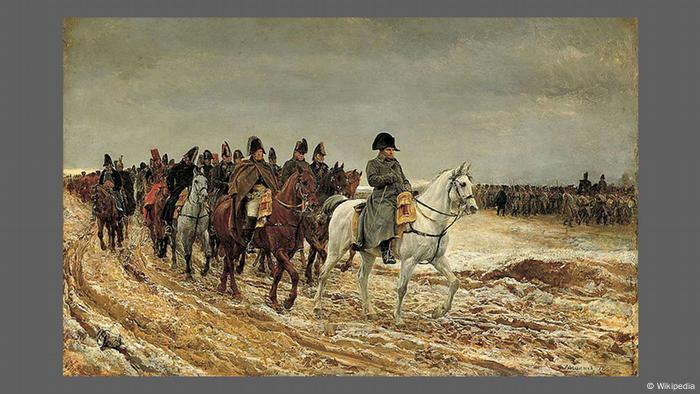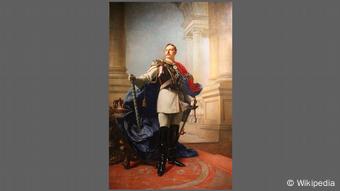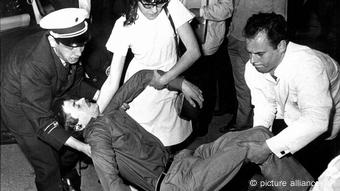
What do we know about the past? On what is our idea of a particular epoch based? As a rule, evidence of something is confirmed by the presence of facts: written sources, oral descriptions recorded by someone, artifacts found as a result of excavations, and, of course, images – drawings, paintings, photographs, films.
Capturing the past in images
In his book “Colors of the past. How history takes shape” (“Die Farben der Vergangenheit. Wie Geschichte zu Bildern wird”), published by Beck (Verlag CH Beck), Berlin art historian Peter Geimer (Peter Geimer ) illustrates in detail the role of the aforementioned visual “witnesses” in history, helping it to assume images in our representation.
Book cover
Better to see it once than to hear it a hundred times? But how much can you trust your own fantasy, visualization of the past, when it comes to reconstructing what happened from the words of eyewitnesses, your individual memory? What exactly do paintings, drawings, photographs, films reflect (depict)? Is it a link? Or is it still an illusion? What modern images (photos, videos) of current events will settle in our memory tomorrow, becoming history?
Can you stop for a moment?
The desire to capture important moments in history, to visually reconstruct the past is as old as the world. In his book, Peter Geimer analyzes in detail the canvases of 19th century painters – such as, for example, the work of French artist Jean-Louis-Ernest Meissonier “The Campaign in France of 1814”, dedicated to Napoleon’s army retreat. In his zeal to reproduce the smallest details of this event with photographic precision, the artist, who worked half a century later, studied in detail the original equipment and uniforms of the Napoleonic army. For the portrait of Napoleon, the master himself donned the uniform of the legendary commander specially adapted for this and modeled the snowy landscape of flour, clay and salt.
The painter’s contemporaries praised and criticized at the same time, they say, this is unreliable, because the paintings are a product of the author’s imagination, who is not a witness to the events. Yes, only images (without written context) are not enough for a complete perception of a given situation, comments the author of the book.

Canvas by Jean-Louis-Ernest Meissonier “Campaign in France 1814”
Thus, in the mid-19th century, panoramic paintings with battle scenes appeared, designed to more clearly reflect the main events of the time, explains Peter Geimer. They are still popular today, a vivid example of this is the large-scale panoramic work by contemporary Viennese artist Jadegar Azizi “Leipzig 1813. In the Mess of the Battle of the Nations”, dedicated to the greatest battle of the 19th century.
The author of the book also draws the reader’s attention to a special angle of “view” of what is happening – for example, through the eyes of the main character of the work, as in Jacques-Joseph (James) Tissot’s canvas. The Lord saw from the cross” (from the series “Illustrations from the Bible”, 1886-1894 gg.). Often the pose of the person portrayed becomes literally “speaking”, as in the portrait of the Emperor of Germany Wilhelm II (Kaiser Wilhelm II. ), written by Berliner Max Koner in 1890.

Max Koner, Emperor William II, 1890
“This is not a portrait, this is a declaration of war,” reacted (supposedly) a French general when he saw the painting. But can one consider historical evidence that the emperor intended to start a war?
Symbols and “icons” of the past
Among the illustrations in the art historian’s book is this famous photograph: the death of student Benno Ohnesorg during the protests against the Shah of Iran, Mohammed Reza Pahlavi, held in West Berlin in 1967. The photo of the tragedy immediately spread around the world, becoming a symbol of the student movement and proof of police brutality.

Death of Benno Ohnesorg
Witnesses later claimed that Benno Ohnesorg was just a passerby and became an “accidental victim”, but he remains an icon of the protest movement to this day. One should not unconditionally rely solely on images, neglecting other evidence, warns Peter Geimer. This leads to misunderstandings and sometimes the distortion of historical events, he is sure.
Story: obvious or incredible?
From historical canvases to the (re)animation of black and white history – in his book, Peter Geimer gives many examples of how any attempt to “beautify”, “retouch”, “bloom” the past becomes a manipulation of history. More than a hundred illustrations (large-scale canvases, retouched black and white photographs, video chronicles of events) in the book by Peter Geimer, professor in the Department of History and Art Studies at the Free University of Berlin (Freie Universität Berlin ), became the object of an analysis of scrupulously written details of the past. It is indicative that the focus of the book, which also includes the results of extensive research carried out within the framework of the university project “BildEvidenz”, is primarily (not counting the biblical theme) artwork of the battle genre.
The past is elusive, says Peter Geimer. It is not possible to observe it, but it is possible to capture only one moment or another in a series of events that quickly fade into oblivion.
Source: DW
Lori Barajas is an accomplished journalist, known for her insightful and thought-provoking writing on economy. She currently works as a writer at 247 news reel. With a passion for understanding the economy, Lori’s writing delves deep into the financial issues that matter most, providing readers with a unique perspective on current events.